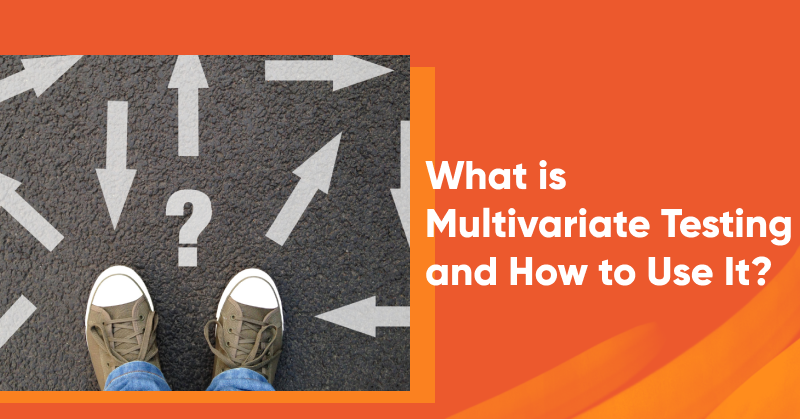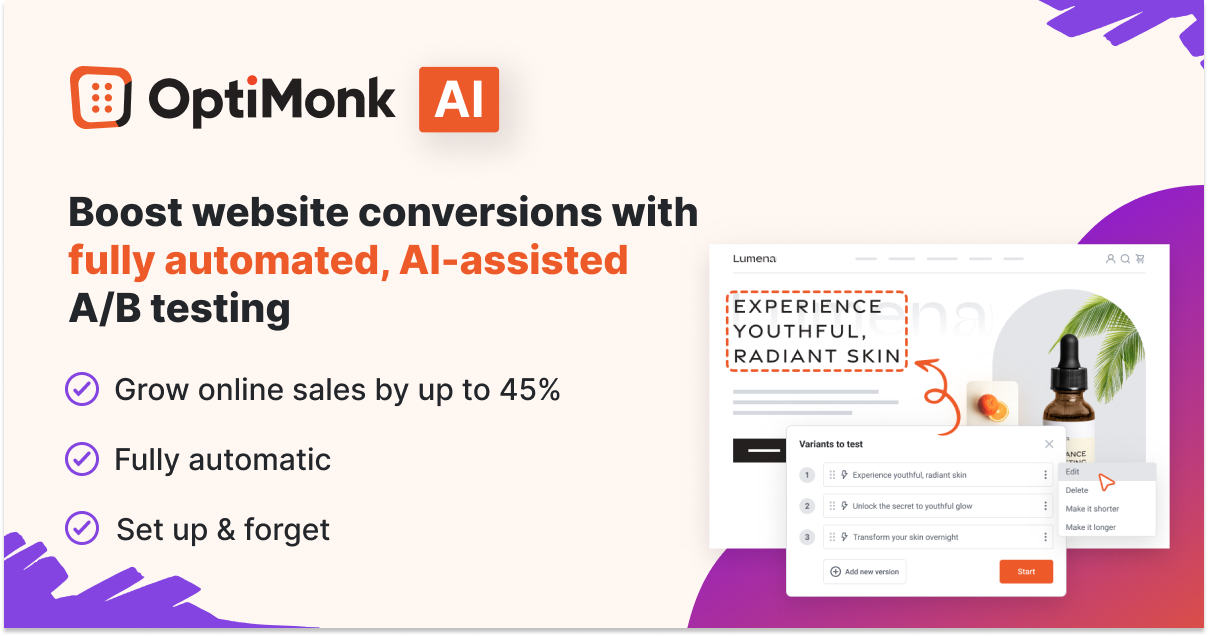Testing and optimization are the building blocks of every successful digital marketing strategy. They’re like the secret sauce that helps you understand how people use your website and what makes them tick.
Multivariate testing stands out as a sophisticated testing method that goes beyond traditional A/B testing. It allows you to test more than one variable to optimize conversion rates effectively.
In this article, we’ll dig into why you might want to do multivariate testing, explore how to accomplish it, and provide some great examples.
Keep reading!
Shortcuts ✂️
- What is multivariate testing?
- What is the difference between multivariate testing and A/B testing?
- What are the benefits of multivariate tests?
- A step-by-step guide to multivariate testing
- 2 real-life examples of multivariate testing
- A smarter way to run multivariate tests
- Top 4 multivariate testing tools
What is multivariate testing?
Multivariate testing, also known as A/B/n testing, is like a more complex version of regular A/B testing.
It helps you figure out how different parts of your webpage work together to convert your visitors. Instead of just comparing two versions of the same page, you can mix and match different elements like headlines, copy, and images to discover how they interact.
In multivariate testing, you carefully mix and show all these test variations to people who visit your page. Each group of visitors sees a unique mix of elements. This way, you can test ideas that involve many various elements.
For instance, you might test a few different headlines, product descriptions, and buttons. The test will tell you which combination of these turns most of your visitors into happy customers.
Multivariate testing allows for the exploration of a wide variety of combinations, highlighting the extensive testing variations that can be assessed to optimize conversion rates.
What is the difference between multivariate testing and A/B testing?
By understanding the differences between these testing methods, marketers can choose the most effective strategy for their needs.
Let’s start with A/B testing, which is a simpler approach when compared to other testing methods.
A/B testing focuses on comparing two distinct versions of a webpage, making it ideal for binary changes to one particular element (like the color of your call-to-action button).
With multivariate testing, you can test multiple elements simultaneously, which means you can run through all the possible combinations of multiple variables within a single page.
Multivariate testing requires a lot of traffic to reach statistical significance, since all the possible combinations of test elements need to be shown to many different website visitors to judge their effectiveness. The amount of traffic you have will affect the trustworthiness of your test results.
Therefore, if you’re trying to optimize a low-traffic page, it might be better to use traditional A/B testing instead of performing a multivariate test.
It will be much easier to hit the minimum sample size for statistically significant results when you’re only showing two versions of a web page to your visitors instead of nine combinations (or more).
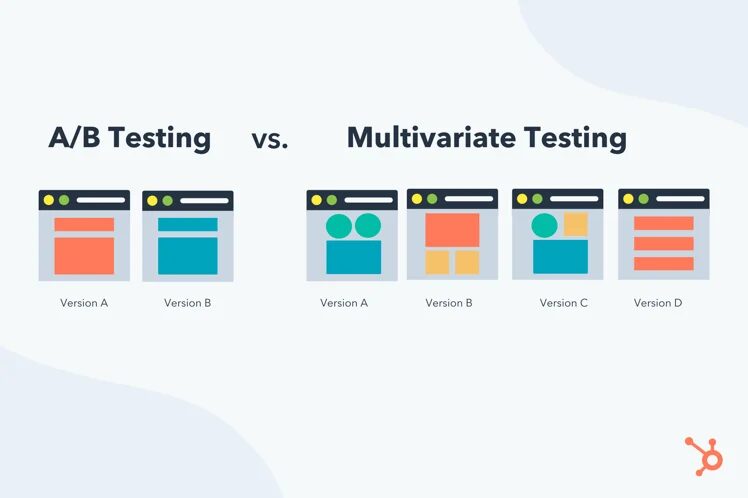
Image source: HubSpot
What are the benefits of multivariate tests?
Multivariate testing is ideal for optimizing your landing pages without completely redesigning them.
Not only can you track how multiple page elements interact, but you can also gain insights into user behavior, preferences, and pain points.
While you can learn about these factors if you conduct informal research, you’ll generate only a fraction of the meaningful results that a multivariate test can deliver. That’s because multivariate testing is so exhaustive that it helps you gather direct feedback on many different versions of a landing page.
When you’ve compared the performance of several different combinations of elements, you can be confident that the winning version is the best choice.
A step-by-step guide to multivariate testing
Let’s break down the steps involved in multivariate testing.
Although it might seem like multivariate testing is extremely complicated, it’s not a whole lot more difficult than basic A/B testing or usability testing.
You just need to follow the steps below!
1. Define your goals
The first step of multivariate testing is defining the goals and objectives of your test. Do you want to boost sales, collect more leads on a landing page, or increase conversions?
Depending on what you want to accomplish, you should formulate hypotheses about how to better accomplish the goal that you’re optimizing for.
If you’re interested in improving your lead generation numbers, think about which aspects of your offer you could change or which visual elements might lead to a higher conversion rate.
Once you’re thinking about the types of variables you want to investigate and the key performance indicators you’re interested in, you can move on to the next step.
2. Select your variables
Selecting the right variables for testing is a critical step in multivariate testing.
This involves choosing which elements you’ll modify on your web pages or marketing campaigns as part of the test.
The elements you can examine as part of a multivariate test include things like headlines, images, offers, copy, and call-to-action buttons, among others.
You should carefully consider which variables you’ll test to ensure that you’ll generate meaningful results.
3. Launch the test
Next, you’ll need to set up and perform your multivariate test.
Multivariate testing software significantly simplifies the setup and execution of these tests by automatically generating different webpage designs and calculating the total number of testing variations from the elements and their variations.
The exact steps you’ll follow here will depend on your multivariate testing tool, but there are always going to be two key tasks:
You need to create variations for each page element that’s going to be involved in your test. That means you should create between 3 and 5 versions of your headline, find a few different images that might work on your page, and vary the design of any other elements you’re testing. Then, you’ll have enough variants of each element to combine with all the variants of the other elements you’re testing.
You need to launch the test and start collecting data. You want to generate as much traffic as possible during your multivariate testing period, since this will help you get statistically significant results. The less traffic is exposed to different variations of your site, the less confident you can be in your test results.
4. Analyze the results for statistical significance
After you’ve run the test, you need to analyze the test results.
This involves comparing the performance of different variations, looking for patterns and trends in user behavior, and assessing the statistical significance of the findings.
The insights gained during this step are essential for making informed decisions about which variations were the most effective.
5. Apply changes accordingly
Once you’ve identified the best-performing variations, it’s time to roll out the changes on a permanent basis.
Once you make the changes, however, you should carefully monitor the relevant KPIs to ensure they continue to have a positive impact on your goals.
2 real-life examples of multivariate testing
Now that we’ve gone over the theory of multivariate testing and the steps involved, let’s see what it looks like in practice!
1. Obvi
The Obvi marketing team thought that they might achieve higher sales if they changed up their unique selling proposition. They performed online testing to find out for sure.
Obvi created many different versions of their USP to discover which one would work best.
They decided to test their headline, subheadline, and products for a campaign focused on better sleep.
Here are a few different combinations of headlines and subheadlines that they included in their multivariate test.
Here are a few different combinations of headlines and subheadlines that they included in their multivariate test.
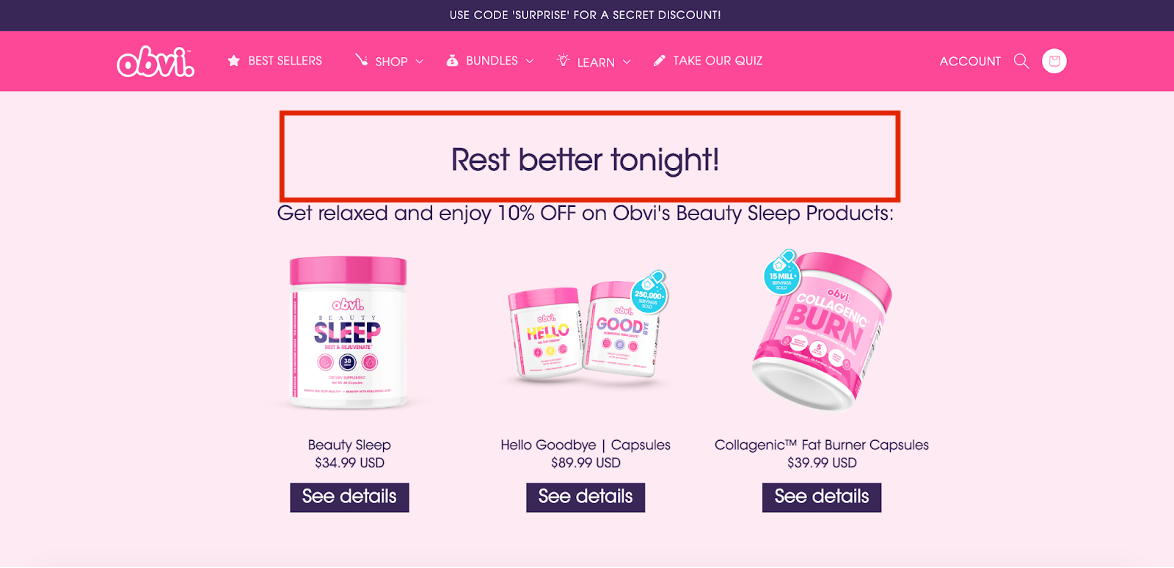
They also tested headlines, subheadlines and products related to weight loss.
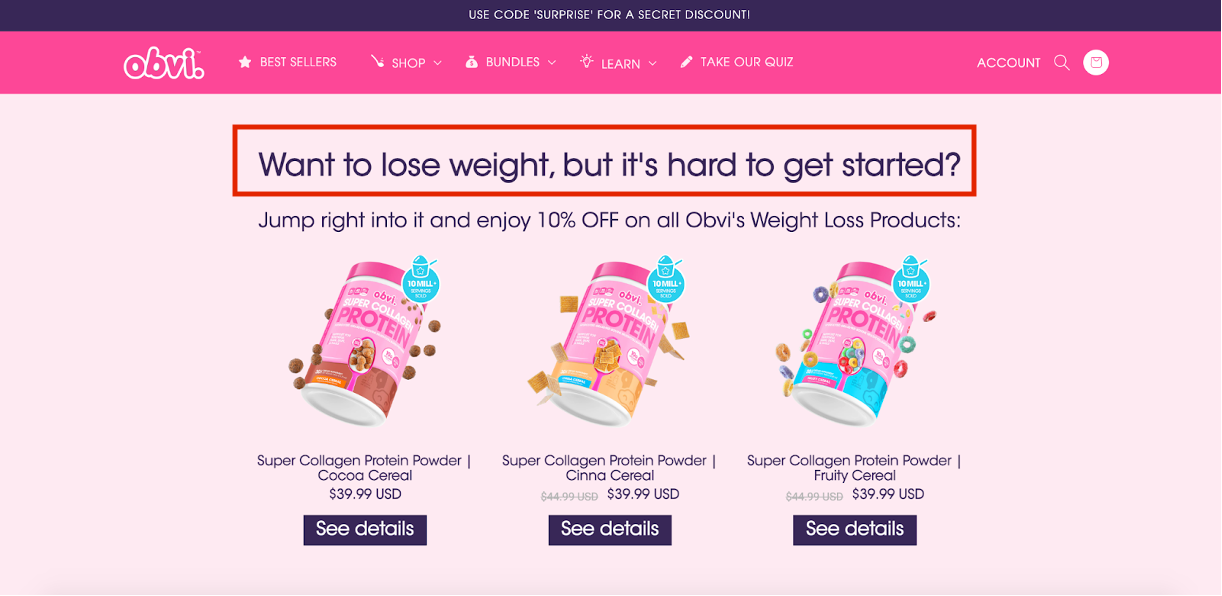
Multivariate testing was their only option, since they were testing more than one element simultaneously.
2. Varnish & Vine
Varnish & Vine wanted to boost conversion rates on their product pages by optimizing multiple elements simultaneously.
They conducted multivariate tests on elements like headlines, benefit lists, and calls-to-action by using OptiMonk’s Smart Product Page Optimizer.
This AI-powered tool automatically analyzed their product pages, creating compelling headlines, subheadlines, and benefit lists tailored to their target audience to drive conversions.

They achieved a 44% boost in their online revenue, and improved their conversion rates by 28% after the optimization.
A smarter way to run multivariate tests
Although multivariate tests are an excellent way to try out optimization ideas that are too complex to fit into a regular A/B test, they require a lot of effort and manual work. Luckily, there’s now an easier way to run multivariate tests without all the fuss.
OptiMonk’s Smart A/B Testing allows you to perform several types of experiments, including conventional A/B testing and multivariate testing.
Best of all, OptiMonk’s tailor-made AI makes multivariate testing fully automatic. All you need to do is set it and forget it—no expertise needed.
You simply choose which elements you want to include in your multivariate test, choose which variants you want to test, and launch it!
Ready to experiment? Try Smart A/B Testing today!
Top 4 multivariate testing tools
Among the myriad testing tools available, OptiMonk, Optimizely, VWO, and A/B Tasty stand out as some of the most powerful and feature-rich options.
Let’s delve into each of these testing tools to uncover their strengths and unique offerings.
1. OptiMonk

OptiMonk is an all-in-one conversion rate optimization toolset that provides popups, website personalization, and A/B testing. It is built for ecommerce marketers and agencies looking for quick and affordable solutions to boost the performance of their campaigns and landing pages.
Our easy-to-use A/B testing tool lets you quickly set up, test, and compare both popup and landing page performance.
Additionally, you can compare complete shopper journeys to measure the impact on the bottom line.
2. Optimizely
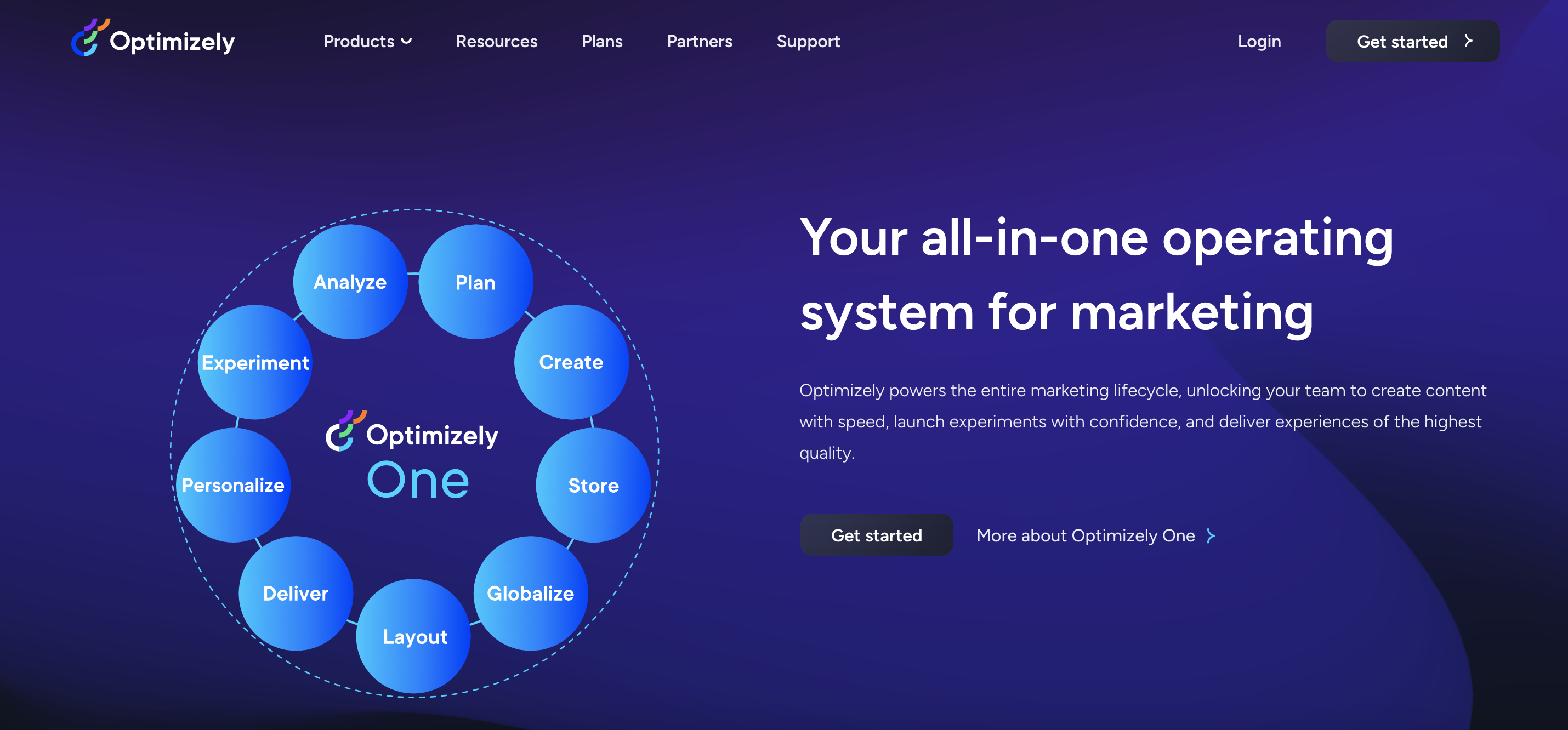
Optimizely is a market leader in experimentation and optimization, offering a comprehensive suite of tools designed to empower businesses to deliver exceptional digital experiences.
From A/B testing and multivariate experiments to personalization, Optimizely equips users with everything they need to iterate quickly and make data-driven decisions.
3. VWO
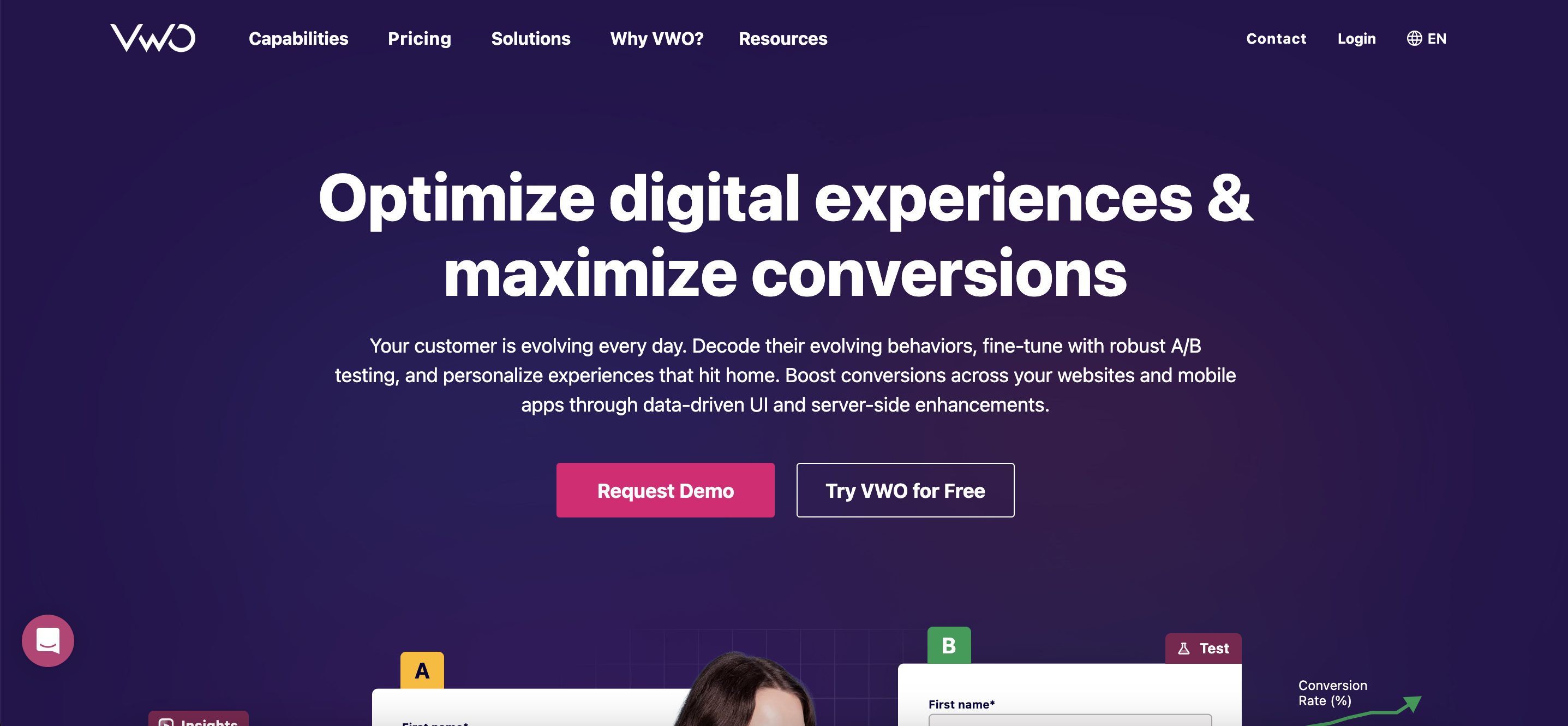
VWO is renowned for its versatility and scalability, catering to businesses of all sizes with its wide array of experimentation and personalization features.
Whether it’s A/B testing, multivariate testing, split URL testing, or heatmaps and session recordings, VWO offers a comprehensive suite of tools to optimize every aspect of the user journey.
With VWO, you can continuously refine your digital experiences to drive higher conversion rates and revenue.
4. A/B Tasty

A/B Tasty prides itself on empowering marketers and product teams to deliver exceptional user experiences through experimentation and personalization.
Its user-friendly interface and extensive library of pre-built templates make it easy to create and deploy experiments without the need for technical expertise.
A/B Tasty’s robust targeting and segmentation capabilities enable precise audience targeting based on a variety of criteria, ensuring that experiments reach the right users at the right time.
FAQ
Are there any best practices for multivariate testing?
There are a number of best practices that can help you derive the most benefit from your multivariate tests. Three of the most important are:
- Setting clear objectives: Start by defining clear and specific objectives for your multivariate test.
- Avoiding excessive changes: While multivariate testing allows for testing multiple variables, it’s essential to avoid making too many changes at once.
- Ensuring statistical significance: To draw meaningful conclusions, ensure that your sample size is adequate to achieve statistical significance.
By following these best practices, you can conduct effective multivariate tests that provide valuable insights for optimizing your digital assets.
How do I decide which elements to test in a multivariate test?
Just like A/B testing, you want to identify the elements that will have the most significant impact on your key goals for multivariate testing. You can start by trying possible combinations of headlines, sub-headlines, images, and CTAs.
What tools or software can I use for multivariate testing?
Several A/B testing tools and platforms are available to help online businesses conduct multivariate tests. These tools include OptiMonk, VWO, and Optimizely.
Wrapping up
Both A/B testing and multivariate testing begin with the traditional scientific notion that you need to perform experiments to validate hypotheses.
In today’s competitive ecommerce world, it’s never been more important for online businesses to use data to drive their decisions rather than gut feelings.
You can take advantage of OptiMonk’s advanced AI tools to conduct A/B and multivariate tests on your online store today!
